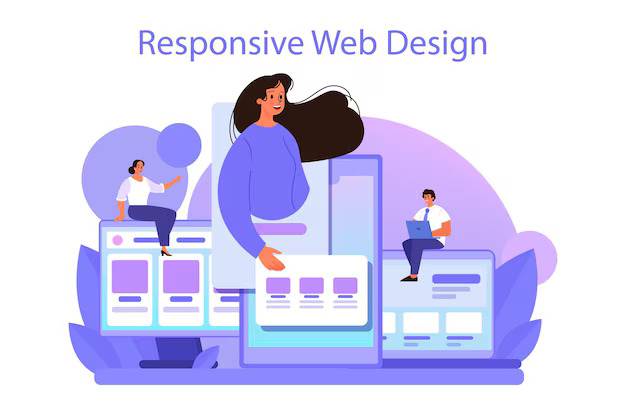In today’s digital age, having a well-designed website is crucial for any business or personal brand. Whether you’re launching an e-commerce store, a blog, or a corporate site, the web development process involves several critical stages, each contributing to the final product. For those new to web development, the process may seem complex, but understanding each step helps set clear expectations and ensures a smoother journey.
- Discovery and Planning
The first step in any web development project is the discovery and planning phase. This is where the foundation for your entire website is laid. During this stage, web developers, designers, and project managers collaborate to understand your business goals, target audience, and the features you want on your site.
Here are some key components of the planning phase:
- Goal Setting: Defining the purpose of the website. Is it informational, transactional, or promotional?
- Research:
Analyzing competitors, understanding user behavior, and identifying industry best practices.
- Site Architecture: Outlining the structure of the website, including creating a sitemap (the blueprint for the site’s pages and navigation).
- Defining Features: Deciding on specific features such as e-commerce functionality, contact forms, user login, or any integrations with third-party tools.
The planning stage sets clear expectations for the timeline, budget, and overall direction of the project.
- Design Phase
Once the planning is complete, the next step is to start designing the website. This phase is focused on the look and feel of the website—how it will visually communicate your brand and engage users.
The design process often includes:
- Wireframes:
A wireframe is a visual guide or blueprint that outlines the layout of each page. Wireframes give a skeletal framework of the site’s structure, helping to identify where elements like menus, text, and images will go.
- Mockups:
Mockups are static images showing the final design of the website. This stage involves decisions about color schemes, typography, logos, and the overall aesthetic of the site.
- User Experience (UX) Design:
UX focuses on ensuring that users can navigate the site easily and interact with the features intuitively.
- Client Feedback:
During the design phase, the client will have the opportunity to provide feedback and request adjustments to ensure the design aligns with their vision.
The design phase is vital for creating a visually appealing and functional site that meets the user’s needs.
- Wireframes:
- Development Phase
After the design is approved, the web development phase begins. This is where the actual building of the website happens. It involves both front-end and back-end development.
- Front-End Development: The front end of the website is what users interact with directly. Developers use programming languages like HTML, CSS, and JavaScript to turn the design mockups into a working website. This stage ensures that the design looks good and functions well across different devices and browsers.
- Back-End Development:
The back end refers to the server side of the website. It involves building the infrastructure that powers the site, such as databases, servers, and application logic. If the site requires complex features like user authentication, data storage, or content management, the back-end development handles those tasks.
In this phase, developers also integrate third-party tools like payment gateways, social media sharing buttons, or analytics platforms.
- Content Creation and Integration
No website is complete without content. Whether it’s product descriptions for an e-commerce site, blog posts, or informational text, content plays a critical role in communicating with your audience.
During this stage:- Content Creation:
Writers and content creators produce the text, images, videos, or any other media that will populate your website.
- Content Management System (CMS):
If you’re using a CMS like WordPress or Drupal, this is when your developers will set it up so that you can manage and update content easily.
- SEO:
Search engine optimization (SEO) is integrated to ensure the content is optimized for search engines, making it easier for users to find your site.
Having a well-planned content strategy helps enhance user engagement and drive traffic to the site.
- Content Creation:
- Testing and Quality Assurance
Before your website goes live, it needs to go through a rigorous testing process to ensure that everything is functioning as intended. The testing phase is essential to identify any issues, bugs, or user experience problems.
- Cross-Browser Compatibility:
Ensuring the website works across different browsers (Chrome, Firefox, Safari, etc.) and devices (mobile, tablet, desktop).
- Performance Testing:
Checking site load speed and performance to ensure the website runs smoothly, even under heavy traffic.
- Functionality Testing:
Testing all features and interactive elements such as forms, buttons, and shopping carts to ensure they work properly.
- Security Testing:
Ensuring the website is secure from potential vulnerabilities, particularly for e-commerce or user-sensitive websites.
- Client Review:
At this point, clients usually review the site to verify that it meets their expectations.
Once the site passes testing, it’s nearly ready for launch.
- Cross-Browser Compatibility:
- Launch
The big day arrives—the website is ready to go live. During the launch phase, the web development team will deploy the website to the live server and perform a final round of checks to ensure everything is working smoothly.
Tasks during the launch include:
- DNS Setup:
Configuring the domain name to point to the hosting server.
- Final Testing:
A last round of tests to ensure no issues have arisen during the deployment process.
- Go Live:
The site is now live and accessible to users worldwide!
Even after the website is live, ongoing support is crucial to address any potential post-launch issues.
- DNS Setup:
- Maintenance and Updates
A website is not a static entity; it requires regular maintenance to stay up-to-date, secure, and relevant. After launch, the development team or maintenance personnel will continue to monitor the site, fix any bugs, and make improvements as needed.
Regular maintenance tasks include:
- Software Updates:
Updating CMS platforms, plugins, and third-party integrations.
- Security Patches:
Ensuring the website is secure from the latest threats.
- Performance Monitoring:
Regularly checking load speeds and traffic patterns.
- Content Updates:
Keeping content fresh and up to date to engage visitors and maintain search engine rankings.
Conclusion
The web development process may seem complex, but by understanding each stage, from discovery to maintenance, you can set clear expectations and avoid potential pitfalls. Whether you’re building a simple website or a complex platform, a well-structured web development process ensures a successful project.
- Software Updates:









